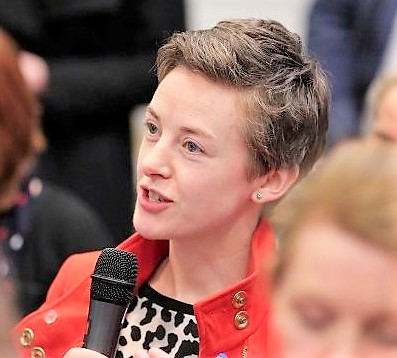In late June the UK Committee for Climate Change (CCC) published its annual report to Parliament on progress towards legally-binding emissions reduction targets as set out in the Climate Change Act. The Act is UK-wide and the CCC provides detail on greenhouse gas emissions for Wales, Scotland, England and Northern Ireland.
The report points out that despite local and national targets for greenhouse gas reductions, last year Northern Ireland increased emissions. We have a target to reduce emissions in 2025 by at least 35% compared to 1990 levels. In 2016 levels were only 16% below 1990 levels. The NI Executive’s own projections suggest that progress is falling short of what is required. The Committee warns that unless action is taken now, we will face an unnecessarily expensive task to shift to a low-carbon economy in the future.
One bright spark in the report is the significant success of the renewable electricity sector in Northern Ireland. We expect to reach our ambitious 40% renewable electricity target in 2019: one year ahead of schedule. Not only that, but a recent study has found that there will be no net cost to the consumer of doing so. It is clear that when it comes to renewable electricity, we are already delivering clean growth. On top of the cost-neutral consumer impact of 40% renewables, there is an additional economic benefit. Across Northern Ireland local Councils receive £10million each year in business rates from large-scale wind farms. Voluntary community benefit schemes set up by wind farm developers deliver more than £1.6million to rural communities annually.
Analysis carried out this year demonstrates that Northern Ireland could have 70% renewable electricity by 2030 with no additional cost to the consumer, so the clean growth opportunity continues to make sense economically as well as environmentally. This requires the right supporting policies, and a continued focus on the innovation that has delivered success so far.
With increased levels of renewables we need to ensure that the cheapest forms of energy are used at maximum capacity. This means minimising the times that wind energy, in particular, is dispatched-down through constraints or curtailment. However, investment in low-carbon generation has not been matched by network
investment, and across the island the greatest percentage of wind dispatch-down last year was in Northern Ireland: 109GWh or 5% of total available wind energy.1
1http://www.eirgridgroup.com/Annual-Renewable-Constraint-and- Curtailment-Report-2017-V1.pdf
Moving beyond 40% renewable electricity and decarbonising our energy sector through the electrification of heat and transport will require much greater emphasis on maximising existing renewables, as well as an increase in new renewable generation. The Interreg-funded GenComm project is seeking to resolve grid constrained renewable energy deployment by implementing pilot plants that link solar power, wind power, and bioenergy with energy storage and the heat, power and transport sectors. In Northern Ireland this involves working to transform and store excess electricity as hydrogen which could then be used to power vehicles, utilising otherwise unused wind energy and simultaneously lowering greenhouse gas emissions from transport.
NI actually increased overall greenhouse emissions by 1.3% in 2016, and NI transport emissions are 29% higher than in 1990. Given the importance of maximising existing renewable generation and the need for better progress on climate change targets, projects that seek to deliver improvements across the transport and energy sectors are vital for our success.
Meabh Cormacain
Northern Ireland Renewables Industry Group (NIRIG)

